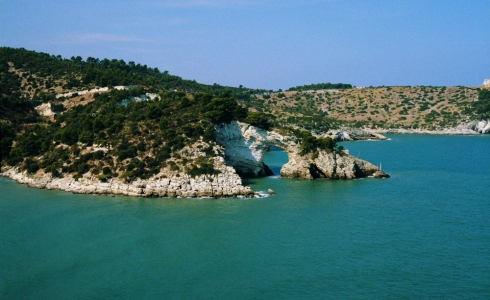

 Wine for Sausages?
Wine for Sausages?
We've found 129 wine(s) in our Italian Wine Guide which are good for Sausages.
Read more

The name Apulia originates in ancient times. The Apulian domains of the Phoenician and of the Greeks have always been treasure for the production of wine and olive oil. More than anything, the Romans celebrated the wines from “Tarantum” and the Roman poet Horace described the area as the place “where spring is eternal”.
“Europe’s wine cellar” is a very appropriate name for Apulia, as the region is among the world’s top seven or eight largest wine producers, surpassing the entire German production. In the past, large steel wine tanks were taken to the north in order to give strength to northern wines, but beginning with the 1980s, the demand required focusing on quality wines.
The conversion from bulk to a more refined production has been a major task, since the region has a positive problem: the extremely favorable growing conditions determine the grape yield to be greater than in all the other regions. Not only is this ideal for large-scale production, but also this established that a target of 30-40% of the production must be bottled.
The DOC wines, counting 25, are obviously far outnumbered, which makes it justifiable to speculate a bit on what happens to the rest of the 98.5% of the wine that is not classified as DOC.
It may be said that the conversion task is on its way to being a successful one. Within the past decade, Apulia changed more dramatically than any other region in Italy. Now, ambitious producers have learned to balance the fruitiness and the strength distinctively and, lastly, they have learned how to produce alcohol rich wines.
Apulia has always been known for cheap wines, but the word “cheap” should be interpreted as having a positive connotation. The value is worth your money, and the reason for that lies in the grapes.
A brief overview of Apulia shows that the southern part of the Salento peninsula is almost dominated by Negroamaro (Italian: black-aromatic), by Malvasia Nera and by Primitivo – the latter with several variants. Regarding the Primitivo variations, a research revealed that the shrub-like plant is identical to the California Zinfandel. This guarantees, in other words, a rich, powerful and strong wine of great character. Negroamaro is pure primordial force.
The central and northern part of Apulia, set north from the line drawn between the port city of Taranto, on the Ionian Sea, to Brindisi, on the Adriatic Sea, is dominated by the Uva di Troia grapes, by Montepulciano and by Bambino Nero grapes. The rosé wines from this area are part of a distinctive class, partly due to the manufacturing method called “lacrima” (Italian: tear), which uses only half of the sap of the unpressed grapes. This method has as result a delicate, dry and very light rosé.
Wine enthusiasts should try, for instance, the red Salice Salentino and Castel del Monte, as well as the white Locorotondo. From the rosé class, having adequate storage, the Leone de Castris, Five Roses wine is absolutely recommended.
Read more about the wines from Apulia (Puglia) by clicking i the top menu in the right side.
That Italy in 2011 was the worlds largest wine producer?